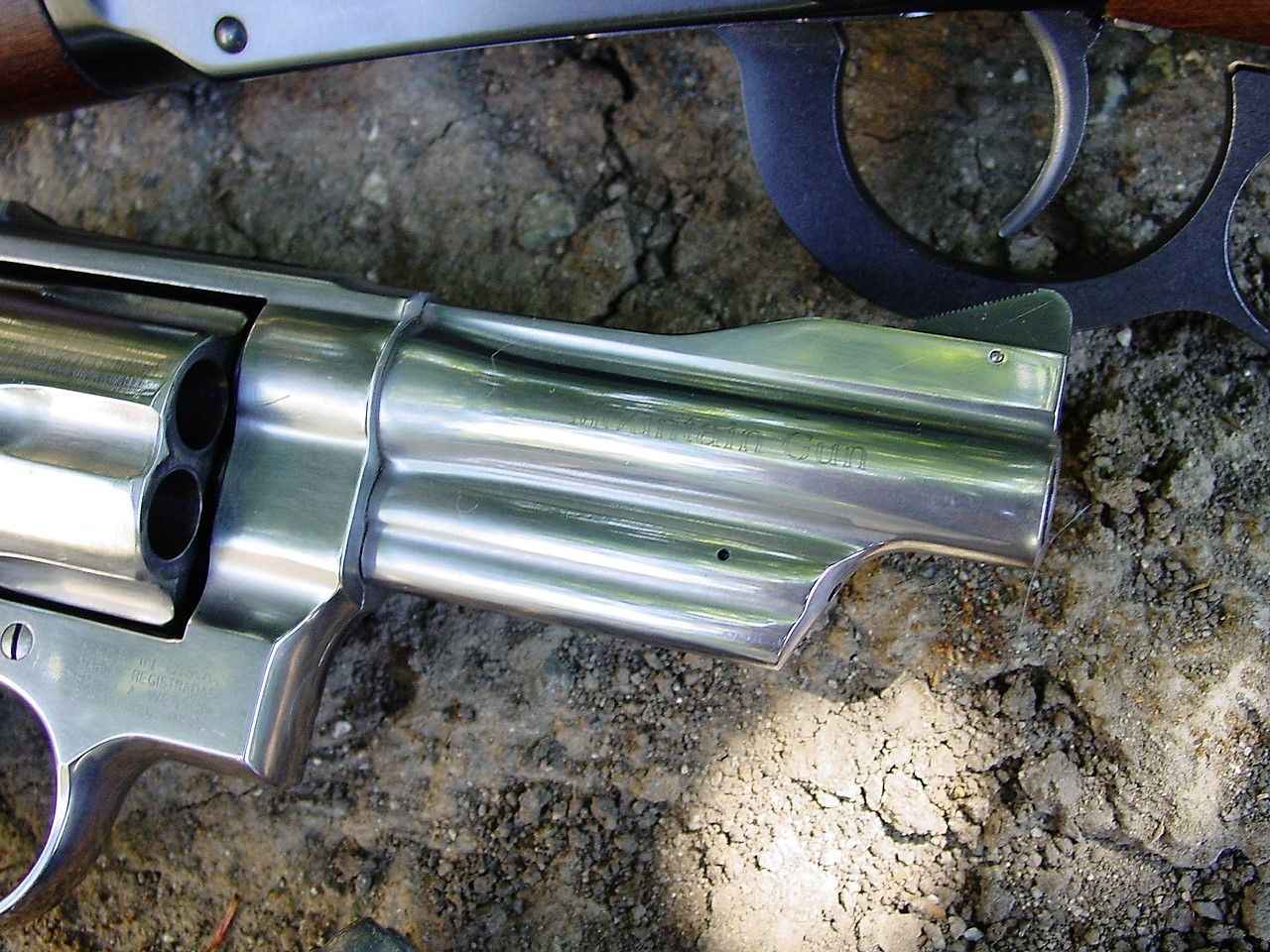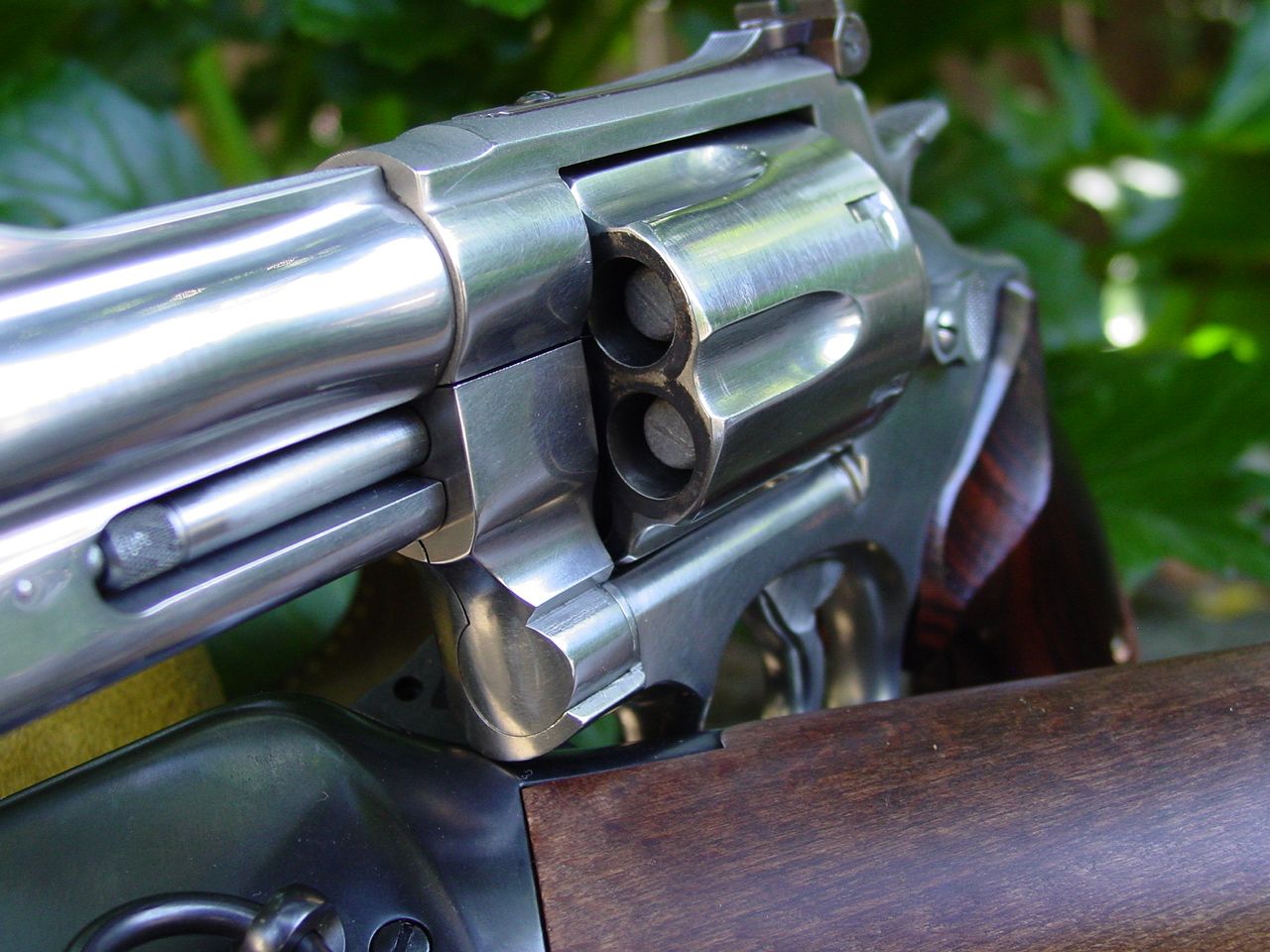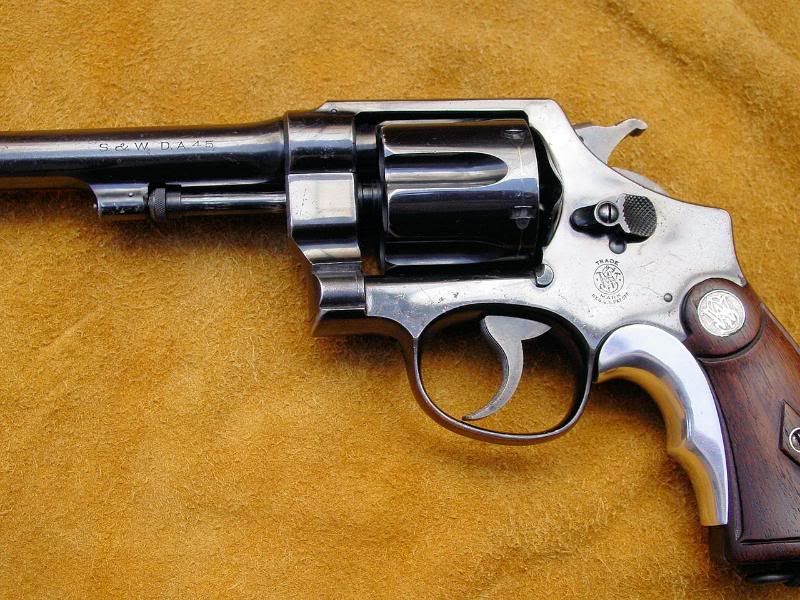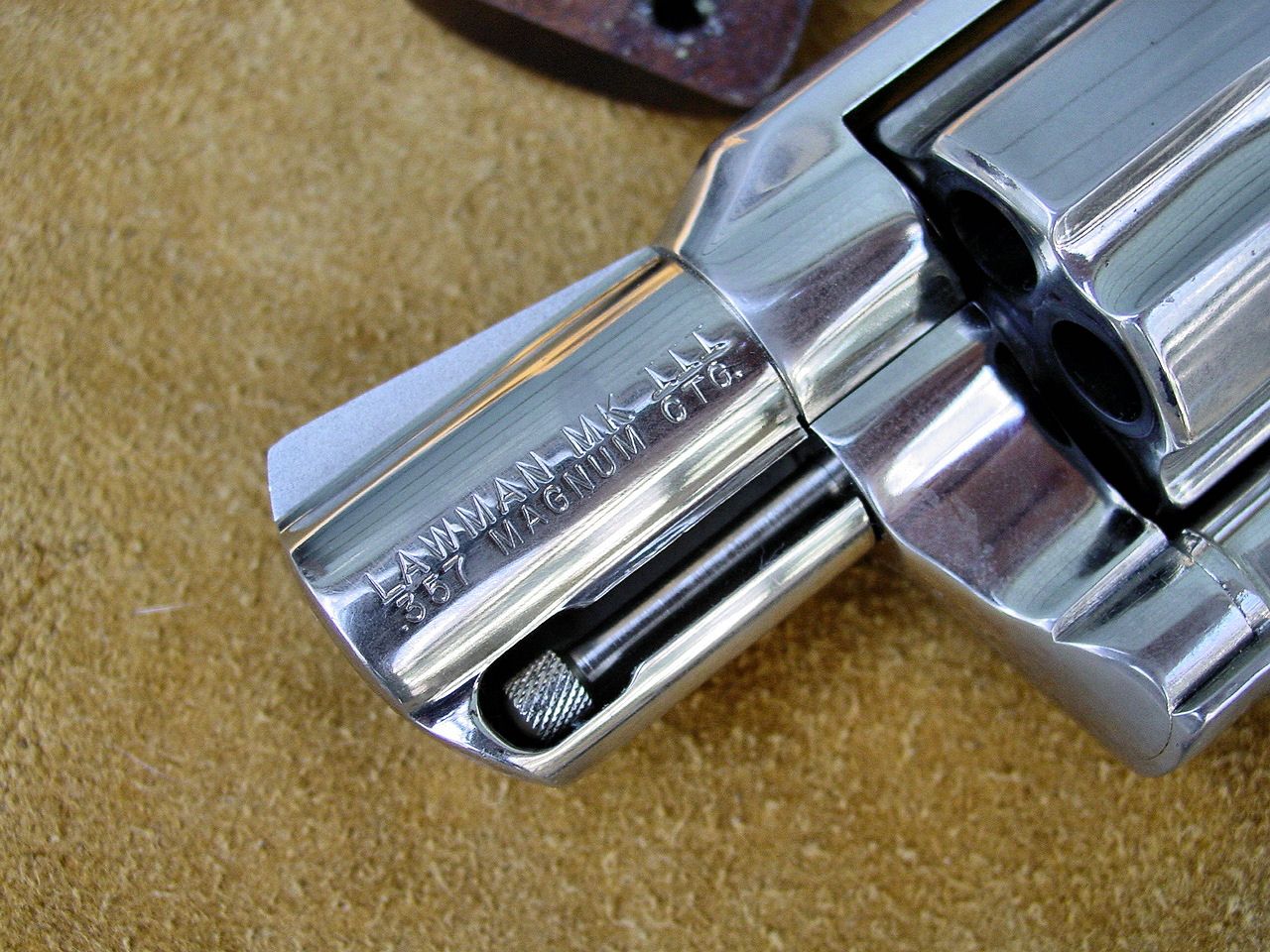You are using an out of date browser. It may not display this or other websites correctly.
You should upgrade or use an alternative browser.
You should upgrade or use an alternative browser.
With the rumors of K frame cone cutting...
- Thread starter Lavan
- Start date
Model12Win
Moderator
Yes.
Doing so would cause a drop in thrust factor pressure against the frontal sidewalls of the water table IMHO.
Doing so would cause a drop in thrust factor pressure against the frontal sidewalls of the water table IMHO.
Would there be any advantage to chamfering the cylinder?
I'm not sure how legitimate the stories are, but just wondering.
Well if you're speaking of chamferring the cylinder this usually means chamfering the front of the cylinder which makes it easier to holster the gun. It has no effect on flame cutting.
Flame cutting normally effects the top strap. It cuts some and then stops. Generally not an issue that effects the gun in any serious way. The unionformed worry on it though.
What you might be thinking of is cracked forcing cones. Which is another story.
tipoc
tipoc has it right. Chamfering the cylinder would offer no advantage in terms of reducing wear on the forcing cone. If excessive erosion is a concern on a K-frame S&W .357 Magnum/.38 Special revolver, shoot the Magnums less (especially the 125 grain bullets from what I've read) and the Specials more.
The above from ludwig is correct. Also keep the cone and the barrel clean and free of lead build up.
Cracked forcing cone on k frame carbon steel 357s only began after high velocity jhp loads began to be used in the 1970s. The issue was not the hot loads. It was the build up of lead and carbon from firing many lrn bullets followed by many hot jhp rounds without cleaning the gun properly of lead build up. Doing this repeatedly caused issues do to the thin area of the forcing cone.
tipoc
Cracked forcing cone on k frame carbon steel 357s only began after high velocity jhp loads began to be used in the 1970s. The issue was not the hot loads. It was the build up of lead and carbon from firing many lrn bullets followed by many hot jhp rounds without cleaning the gun properly of lead build up. Doing this repeatedly caused issues do to the thin area of the forcing cone.
tipoc
Last edited:
The issue was not the hot loads. It was the build up of lead and carbon from firing many lrn bullets followed by many hot jhp rounds without cleaning the gun properly of lead build up.
The issue was not just lack of cleaning. It was also the hot loads and quantity of them. A friend of mine has personal experience with (at least)two guns that failed, which had only fired jacketed bullets. I will be visiting him this weekend, and we will put together the details to share with the forum.
This subject has been discussed at length in previous years, a search will turn up quite a bit of information.
Do understand that the cracked forcing cones issue is not something that happened to every gun, every time, the way some people make it sound.
Further details to follow...
Forcing cones cracking has been an issue with 357 magnum K frames ever since I have been working on guns (35 years). Remember that K frames were originally designed for 32 caliber cartridges, and putting a bigger hole in the same size barrel shank leaves the walls thinner. The forcing cones are very thin, and repeated hammering with hot jacketed loads will eventually split the forcing cone. Pretty much a proven fact.
Gas cutting is a separate issue, and S&W and Colt used to machine a small divot in the top strap directly above the barrel-cylinder gap to move the metal further away from the high pressure gases discharged there. Worked well, never saw an older Colt or S&W with gas cutting on the top strap.
Gas cutting is a separate issue, and S&W and Colt used to machine a small divot in the top strap directly above the barrel-cylinder gap to move the metal further away from the high pressure gases discharged there. Worked well, never saw an older Colt or S&W with gas cutting on the top strap.
Talking about three distinctly different things in this thread.
Cone erosion, cone cracking, and topstrap flame cutting.
None of which would be affected by chamfering the chambers.
And chamber chamfering is done at the rear of the cylinder, beveling is done at the front.
Denis
Cone erosion, cone cracking, and topstrap flame cutting.
None of which would be affected by chamfering the chambers.
And chamber chamfering is done at the rear of the cylinder, beveling is done at the front.
Denis
Talking about three distinctly different things in this thread.
Cone erosion, cone cracking, and topstrap flame cutting.
None of which would be affected by chamfering the chambers.
And chamber chamfering is done at the rear of the cylinder, beveling is done at the front.
Denis
In theory the front of the cylinder could be chamfered and I was guessing that's what the OP was talking about since that's the only way chamfering would have any impact on pressure/bullet hitting the forcing cone. It sounds like bad idea to me...
FWIW I thought the cracked forcing cone was due to combination of FC erosion and the lighter/shorter bullets going into free flight while transitioning from the cylinder to the FC and then smacking into the bottom of the FC. For example if you take a light (125 grain or less) bullet and drop it into the FC you will see that barely any of the bullet sticks out of the barrel. If the FC is eroded it's possible for the bullet to be traveling without any guidance from the cylinder or barrel for a brief moment. During the free flight the gun is still moving up in recoil and when the bullet contacts the FC it smack right into the weakest part of the FC.
How could the front of the cylinder be chamfered.
In the context of chamfering a cylinder, it's done on the INSIDE diameter of each chamber, very slightly, at the REAR of the chamber, to allow smoother loading.
Beveling on a CYLINDER is typically done on the OUSIDE diameter of the cylinder, at the front.
Chamfering the front end of a CHAMBER is something I've never heard of, and I can't imagine why you would.
Denis
In the context of chamfering a cylinder, it's done on the INSIDE diameter of each chamber, very slightly, at the REAR of the chamber, to allow smoother loading.
Beveling on a CYLINDER is typically done on the OUSIDE diameter of the cylinder, at the front.
Chamfering the front end of a CHAMBER is something I've never heard of, and I can't imagine why you would.
Denis
The front of a cylinder (the part closest to the barrel) can be both chamfered and beveled. Different operations. The front edge is chamfered with either a radius or an angle. The edges of each individual lighting cut out on the cylinder can be beveled. The bevel is often called a black powder bevel because it goes way back to the days when there was nothing but black powder single actions. There was also chamfers there as well but that was often seen on all handguns anyways.
The chamfer took away any sharp 90 degree angle on the cylinder and the bevel did the same on the edges of the cut outs on the cylinder.
Below you can see the chamfer on the front of the cylinder.


On this gun you can see the bevel;

tipoc
The chamfer took away any sharp 90 degree angle on the cylinder and the bevel did the same on the edges of the cut outs on the cylinder.
Below you can see the chamfer on the front of the cylinder.


On this gun you can see the bevel;

tipoc
How could the front of the cylinder be chamfered.
Chamfering the front end of a CHAMBER is something I've never heard of, and I can't imagine why you would.
Denis
I'm not saying it's a good idea. I'm just saying it would technically be possible. It might lower pressure slightly in-between cylinder and forcing cone but it would also allow a lot more gas to blow by and would probably just create more problems in the end.
12,
Bourbon today, or scotch?
Thats funny, I don't care who you are.
I can't see any way a chamfer on the front of the cylinder would stop gas cutting. I had a model 19 I learned to handload with. I shot every hot load I had bullets and powder for to reproduce the loads in my #10 Speer reloading manual. I did clean that gun to a sparkle after each shooting session.
I never damaged the forcing cone. If I had any top strap cutting it was so small I never noticed it. I shot the 110gr loads with 2400 powder that was supposed to reach 1700fps velocity. No damage to the gun. I liked to shoot the mud around the edge of my buds pond. The craters those loads made were impressive. Even from 70 yards away. I wish I still had the gun.
Dpris,
No, like you said earlier nobody does that. There would be no point. If you mean chamfer the chambers on the end of the cylinder. And, like you also said, a chamfer on the chamber throats eases loading from the face, and that does make sense.
Another of a chamfered cylinder...

Tip,
I can see a cylinder bevel.
Are you saying you chamfered the INSIDE diameters of the chamber throats?
Denis
No, like you said earlier nobody does that. There would be no point. If you mean chamfer the chambers on the end of the cylinder. And, like you also said, a chamfer on the chamber throats eases loading from the face, and that does make sense.
Another of a chamfered cylinder...

Jim Watson
New member
On a single action, a substantial bevel is known as a "black powder chamfer" from old Colt style.
Smoother to slip into the scabbard, you know.
Smoother to slip into the scabbard, you know.
